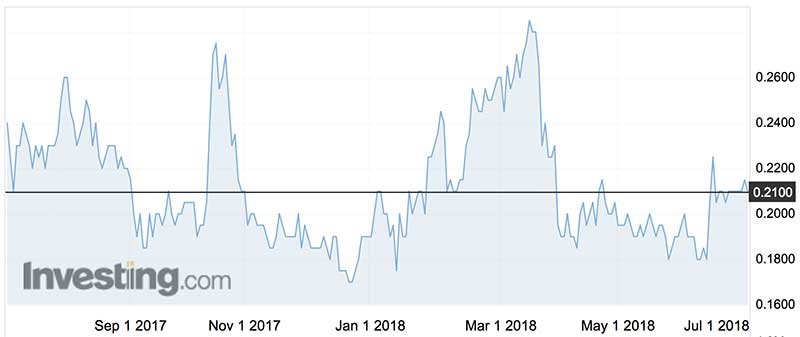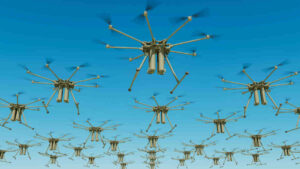Droneshield isn’t expecting an offer, but if someone gives them a ring they might say yes

The board of drone-killer Droneshield has a takeover on their mind — their own.
A chunk of incentive options dropped into the directors’ portfolios last week and one condition is that they vest in case of a change of control.
The four directors of Droneshield (ASX:DRO) received a share of 21 million options with a zero exercise price — or no fee for converting them into shares.
Droneshield makes anti-drone devices such as the DroneGun — a rifle-style, battery-powered product designed to knock out enemy drone models.
The stock jumped 25 per cent two weeks ago when the first multi-million dollar order for 70 Droneguns came in from an undisclosed Middle Eastern country for $3.2 million.
Chief Oleg Vornick says he appointed a US corporate advisor in October last year “to assist the company with a range of corporate transaction discussions with larger third parties” in defence and aerospace.
If one of those happens to turn into a takeover offer, the directors are allowed to convert their options into shares.
“In the event of a takeover, the company may never get an opportunity to meet the revenue benchmark, while the shareholders may receive a return that exceeds the return they would receive even if the revenue benchmark was met in the absence of a takeover,” Mr Vornick said.
“For clarity, all third-party discussions at this time are just that – discussions.”
Currently the largest shareholder is Long Hill Capital with 36 per cent.

Who got what
At Droneshield’s closing share price on Monday of 21c the total option package was worth $4.5 million, and dilute or reduce the value of other shareholders’ stakes by 11 per cent.
Mr Vornik receives 12.4 million options, Peter James 6.6 million, Robert Clisdell 1.6 million and boardroom newcomer Brad Buswell gets 400,000.
The other condition for conversion is that the company makes more than $10 million in revenue in a 12-month period within the next three years.
Last year, Droneshield made $310,724.
- Subscribe to our daily newsletter
- Bookmark this link for small cap news
- Join our small cap Facebook group
- Follow us on Facebook or Twitter
Stockhead asked Mr Vornik why the board, and not the company’s executives, were responsible for lifting revenue.
“The size of the company places a constraint on the cash remuneration that the company is able to pay its board members,” Mr Vornik said.
“The company’s performance is a direct consequence of the board’s performance. In turn, revenue is the clearest and most objective measure of a company’s performance. Hence the linkage between the vesting of the board options and the revenues.”
UNLOCK INSIGHTS
Discover the untold stories of emerging ASX stocks.
Daily news and expert analysis, it's free to subscribe.
By proceeding, you confirm you understand that we handle personal information in accordance with our Privacy Policy.








